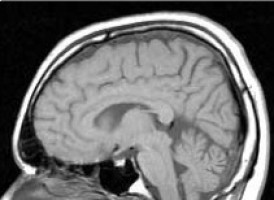
For the first time, the protein PHIP (pleckstrin homology domain-interacting protein) has been shown to play an important role in the development and progression of glioblastoma (GBM), the most malignant form of brain cancer.
The results of this new research were published this in the journal Proceedings of the National Academy of Sciences (PNAS) by David de Semir, Ph.D., a scientist at Sutter's California Pacific Medical Center Research Institute (CPMCRI).
Dr de Semir is first author of the publication, which was prepared in collaboration with other researchers at CPMC and Cincinnati Children's Hospital Medical Center.
"Glioblastoma is one of the most intractable types of brain cancer. Our findings propose a novel mechanism by which this disease exerts its aggressiveness," says Dr de Semir. "We're committed to advancing this research to help guide and inform care for the treatment of Sutter patients with this illness and other patients worldwide."
GBMs are difficult to treat for several reasons.
They arise from a type of brain cell called astrocytes.
Shaped like a star, these cells develop tentacle-like branches that are difficult to remove surgically.
And because astrocytes help control the amount of blood reaching neurones (brain cells), cells that become cancerous gain access to a reservoir of blood vessels that allow the cells to grow and spread quickly.
The findings by Dr de Semir and colleagues show that PHIP resides at the leading edge of GBM cells, enabling other adhesion proteins to deepen the grip of cancerous cells that invade healthy brain tissue.
Further, PHIP helps support the development of new blood vessels that nourish cancerous tissue in the brain.
PHIP has been previously shown to have a role in the development and progression of melanoma, the most deadly form of skin cancer.
To understand the protein's role in GBM, the researchers used short fragments of RNA (ribonucleic acid, the messenger that carries instructions from DNA) to "silence" the expression of PHIP in malignant brain cancer cells.
"Suppressing PHIP protein helped inactivate proteins that form the machinery for tumor cell movement, which drives the aggressive behaviour of GBM," says Mohammed Kashani-Sabet, M.D., medical director at the CPMC Cancer Center and senior author of the PNAS publication.
This year, approximately 24,000 American adults will be diagnosed with primary cancerous tumours of the brain and spinal cord, and almost half of those will die from the disease.
Brain and other nervous system cancers are one of the leading causes of cancer deaths in the U.S.
The five-year survival rate for people with a cancerous brain or spinal cord tumour is only 36%.
"To advance these findings, we plan to test investigational, drug-based inhibitors of PHIP as a novel approach to treat GBM and help improve patient outcomes," says Liliana Soroceanu, M.D., Ph.D., lead scientist of the glioblastoma research lab at CPMCRI.
The researchers hope to launch clinical trials testing a PHIP inhibitor for GBM at Sutter's CPMC Cancer Center.
Research at CPMC - A new strategy to advance brain cancer treatment:
Source: Sutter Health